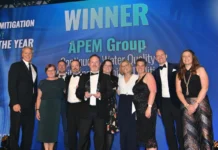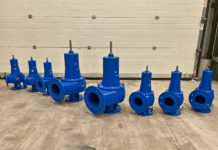
A new sensor from miniature sensors expert Unisense measures hydrogen sulphide (H2S) dissolved in wastewater. This enables utilities and consultants to find the root cause of hydrogen sulphide odour problems in sewer networks, which makes odour mitigation faster and saves significant cost for chemicals.
“Hydrogen sulphide has the characteristic smell of rotten eggs. It is quite common in sewer networks – especially, when wastewater is pumped over long distances. Warm climate and long retention times is also a dangerous cocktail that often leads to both odour nuisances and downstream corrosion issues,” says Ebbe Kruse Vestergaard, Technical Business Developer at Unisense.
The sensor is said to be the first industry grade sensor available that measures directly in the liquid-phase of the sewer without any pre-treatment. This enables precise and cost-effective root-cause analysis of sulphide problems leading to more effective mitigation initiatives.
“Utilities and consultants face severe difficulties identifying the real source of hydrogen sulphide in their sewer network. They find that their current practice of grab samples and gas detectors at the location of odour complaints is clearly insufficient,” Ebbe Kruse Vestergaard says.
“Consequently, they end up over-treating and spending tons of chemicals on a large upstream sewer network where most branches may be leading to no or very little sulphide related problems.” He continues.
Find exact source
The new sensor from Unisense makes it possible to measure instantly and directly in the wastewater. Communicating with computers and SCADA systems, the sensor is a key tool in preventing over treatment.
“Utilities and consultants can easily make measurements in the different sewer branches leading to the location of the symptoms. This way, they can find the exact source containing dissolved sulphide and look for the right mitigation strategy for that branch. Often this is a dedicated dosage of chemicals,” Ebbe Kruse Vestergaard explains.
Asset management 2.0
Odour complaints from citizens is, however, not the only reason to optimise hydrogen sulphide in the sewer lines. According to Ebbe Kruse Vestergaard, high concentrations of the gas can also cause severe corrosion of concrete pipes, pump stations and pumps.
“If a normal sewer pipe with a lifespan of 50-100 years is exposed to high concentration of hydrogen sulphide, then the concrete walls can be degraded to the point of breakage in less than 10 years.”
“Replacing and repairing sewers is one of the biggest operational costs of utilities, and with the sensor’s ability to map out the sulphide concentrations throughout the network, new approaches to asset management may be seen in the future.”
Unisense will be exhibiting at the Pavilion of Denmark at Aquatech. Meet them at stand number 07.401B.







